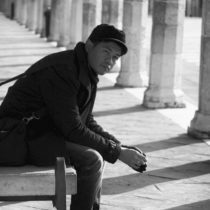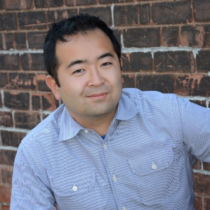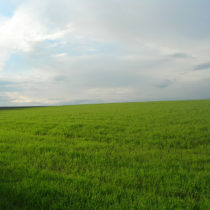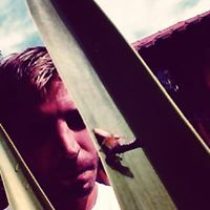Landscape Architecture for Landscape Architects › Forums › GENERAL DISCUSSION › What is the best way to improve design skills?
- This topic has 1 reply, 13 voices, and was last updated 8 years, 2 months ago by
Anonymous.
-
AuthorPosts
-
April 19, 2015 at 10:27 am #151983
 Benjamin LohParticipant
Benjamin LohParticipantI have a passion for public green open space design but don’t have much experience in this type of project. What would you recommend for someone like me to improve on this?
April 20, 2015 at 9:51 am #152002Anonymous
InactivePick up a pencil or pen and start moving some medium around. See where it goes, and don’t over think it. I design open space (greenways, parks, trails, etc.) within master planned communities. I start out with a shape that I think “looks good” and I change it over several sheets of trace until I get something that actually works. Transfer your thoughts on to paper, and do it quickly. It’s okay to be wrong on the first few sketches as long as you are actually brainstorming. If you can’t advance beyond this stage, hunker down and repeat, repeat, repeat until something works. Do it again on the next site, and repeat, repeat, repeat. Too many portfolios today are heavy on polished projects and over-rendered details. I don’t see enough of the basic design process which can even be a solid design with a bunch of cross-outs.
April 20, 2015 at 4:08 pm #152001 Tosh KParticipant
Tosh KParticipantFind successful spaces and diagram them, breaking them down to analyze why they work.
April 21, 2015 at 2:49 am #152000 ncaParticipant
ncaParticipantI used to think that the best way to design was to start drawing (and I draw alot), but lately ive found myself thinking through concepts in my mind, writing, note taking, discussing, then finalliy diagramming the thought. The traditional design process comes much later for me after lots of thinking. Often times when i sit down to draw im just drawing whats already in my mind. I find that if i am doing too many overlays and redrawing its often time to step away as i havent given myself the opportunity to form the concept in my mind first. This is the key to be an efficient designer–you can think through design while writing emails, doing cad, getting coffee, etc.
April 21, 2015 at 8:38 am #151999 Benjamin LohParticipant
Benjamin LohParticipantMy current firm doesn’t have much of this project. Will read more!
April 21, 2015 at 8:39 am #151998 Benjamin LohParticipant
Benjamin LohParticipantInsightful ! Thanks
April 21, 2015 at 8:39 am #151997 Benjamin LohParticipant
Benjamin LohParticipantI like this. Will try that. Thanks Tosh K
April 22, 2015 at 6:20 am #151996 idaParticipant
idaParticipantI usually start doing analysis/research, figuring out the big issues, analyzing the context (where people come from, who will use it, what they need, etc) doing a lot of diagrams, and making a structure. This process can also involve multiple designers and the client(s)/public through workshops, discussions, etc. It gets messy, but can make your life a lot easier when you start making shapes.
April 23, 2015 at 11:48 pm #151995 Mark Di LucidoParticipant
Mark Di LucidoParticipantI would add two things: the design process should include discovering what the site really wants to be, as if you’re uncovering a hidden treasure or peeling layers of an onion. Some designers call this, “letting the site tell you what it wants to be”. This idea comes from Alexander Pope’s ‘Epistle IV’, which introduces the concept of ‘genius loci’ or ‘genius of the place’ and very poetically points out the critical importance of adapting design to site context. Thus your (anyone’s) passion for green open space design should include this as the most important design determinant. Second, include end users in the design process as they sometimes have intimate knowledge of the ‘genius of the place’ that will make it successful.
April 24, 2015 at 3:10 am #151994 Andrew Garulay, RLAParticipant
Andrew Garulay, RLAParticipantGo to actual public spaces and observe what the built work is, what of that built work is being used and what is not, how is it being used, who is using it and who is not, and what type of experience those people seem to be having. What is happening that is positive? What is happening that is negative? Are there surrounding circumstances that influences what happens or does not happen in the space? Observe what may be mitigating the negatives and what may be enhancing the positives.
Putting pen to paper before that is just going through the motions. The pen should follow the thought. Once you develop your understanding you’ll process it like you feel it rather than think it, whether it is public space or residential, or commercial space that you concentrate in. I think that is what makes it hard for people coming into landscape architecture to learn some things from veteran designers. We forget that what we now do by rote did not come so easily, so we tend to tell the story starting at chapter 13 instead of chapter 3 or 4.
Benjamin might be at chapter 13, I don’t know. But some people who are at chapter 3 or 4 might also read this, so I thought it would be worth writing.
I also agree with all of the other posters who have taken the time to add to this thread.
May 6, 2015 at 1:36 am #151993 Benjamin LohParticipant
Benjamin LohParticipantThank you Andrew. Your advise is very much appreciated. I do agree that one can learn so much by just observing and analysing a built work.
I am now looking for some good projects (public spaces) with very good contours plan online that I can learn from. I am not very good in drawing contours but I know it’s pivotal if I want to become a top designer.
Let me know if you come across any good examples
May 6, 2015 at 5:28 pm #151992Anonymous
InactiveI’m still sticking with my “get-it-done” approach, which is very non-academic and non-philosophical. You either have the talent or you don’t, and I know that’s not egalitarian. I have yet to find a resource, whether it is it a teacher or a book, to “re-program”/sharpen parts of the brain to think creatively. Sure, you can go through drill after drill, diagram after diagram, and learn skills you didn’t have before. But where is the spontaneity? I still don’t understand those weekend classes where everyone paints the same Monet or Van Gogh. Sure, you are introducing them to the creative process, but as a spectator on the sidelines. I would rather create my own art for art sake rather than copy someone else’s work. The exception would be art students studying other art work as part of formal training.
At a Barnes and Noble last weekend, I found a sketch pad where each blank page had the name of something different (“dog”, “lemon”, “fall wedding”). Whatever happened to drawing whatever came to mind? Who cares if it is wacky, eccentric, morbid, or messy? I don’t read books on how to design, and I sure as heck don’t listen to armchair critics (most of whom don’t design themselves) mock my work. As long as I meet the client’s needs I’m happy. If I get to do something a little creative, there is a bonus. Just my two cents.
May 14, 2015 at 11:11 pm #151991 Ignacio ViganoParticipant
Ignacio ViganoParticipantTAKE PICTURES OF EVERY YOU LIKE WITH YOUR CELLPHONE. YOU CAN PRINT IT IN B&W AND MAKE YOUR PLANING OVER IT, WHIT WATERCOLOR, PENCILS. ONE IMPORTAN THING TO ME, IS SEE THE PLANTS IN THEIR DIFFERENT ETAPES SHAPES. ON THE WILD OR POTS.
June 1, 2015 at 7:41 pm #151990 J. Robert (Bob) WainnerParticipant
J. Robert (Bob) WainnerParticipantAs you (NCA) and I understand, the “design process” does not come easily for inexperienced LA’s. Whether you’re a recent LA graduate OR a very young start-up LA firm. And more often than not, it takes several years in the private practice world to “understand’ the design process where you’re generating very creative, bold and professionally designed projects.
I started a discussion recently…..and have offered “mentoring” & “consulting” services to inexperienced LA’s & young LA firms. I have had a few positive responses, but, not nearly as many as I would have expected. Maybe nobody believes they need help?
A student can learn just so much in a University Landscape Architecture program, then, you need to learn from Professional LAs…..preferably in a descent size LA firm (where there are experienced & talented LA’s to mentor you). Yeah, easier said than done. Last night, I was reading on an INDEED LA discussion blog where a 2010 Landscape Architect graduate is STILL searching for her first job in Landscape Architecture (4-1/2 years, she said).
I have been mentoring a young LA on the East Coast for (39) months now. He had approx. 3 yrs. experience at an LA firm, but was laid off. He’s been working on his own start-up firm and it’s coming together nicely.
I have an equivalent of (39) years of experience in “private practice”, if you include my (4) years of over-time. I’m more than willing to assist young LA’s and young LA firms get up to speed on the “design process”. Well, I won’t do it for FREE, but, I will for very reasonable rates.
All you have to do is contact me and ask. E-mail: bobcalifornia61@aol.com
Best Regards,
J. Robert (Bob) Wainner – Plano, Texas
June 2, 2015 at 6:55 am #151989 Benjamin LohParticipant
Benjamin LohParticipantThanks Robert. See my email.
-
AuthorPosts
- You must be logged in to reply to this topic.


